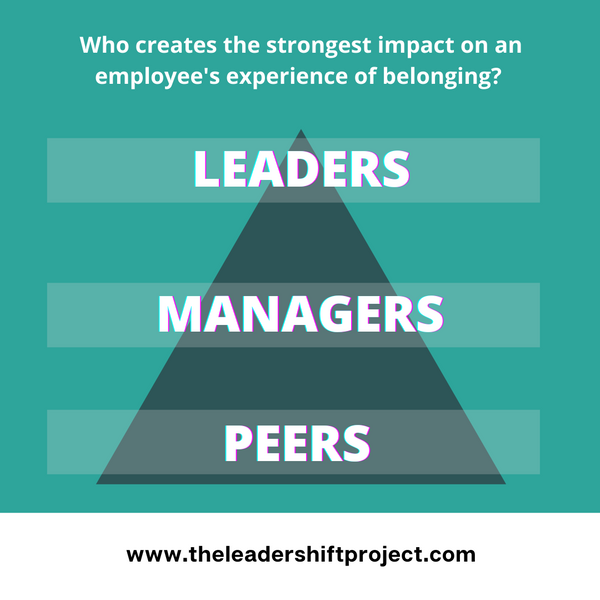Belonging is a fundamental human need. It can be defined as the emotional connection and feeling of closeness to other people and groups. The longing to belong is a natural part of our existence as social beings, yet sense of belonging doesn’t always come easily.
Especially in the workplace.
More than 40% of people in the USA feel emotionally and physically isolated at work regardless of age, ethnicity, gender.
A feeling of community is great but it isn’t enough. It’s not just the employees who are part of an organization; it’s the leaders too. Today, I want to ask about building a sense of belonging among its leaders. Are you doing any of these things?
Employees have been known to show up at work each day, get their tasks done, and then go home. But this is not the experience that leads to superior employee engagement. The world’s workforce is changing, and so too is the way we relate to each other.
Today, more than ever, workers are looking for greater meaning in their work.
The leadership practices of the past do not support a sound belonging experience. There should be an open conversation about what it looks like to be a fully engaged leader in today’s society — a leader who understands that belonging is essential to living with purpose, fulfillment, and vitality.
So what do employees need to enhance their sense of belonging?
It starts at the top.
LEADERS SET THE TONE. MANAGERS CARRY THE CULTURE. AND PEERS DRIVE THE BELONGING.

You make the office environment. You decide how people will interact with each other, whether they will cooperate or compete, whether they’ll feel like they’re part of something bigger than themselves. If you want to foster a sense of belonging in your employees, you have a lot of power.
A “leading” company is aware of this and creates cultures, systems and processes that foster relationships that must grow for the business to succeed. Within the confines of these systems, leaders are hired to facilitate empathy, let go of perfection and offer a vision to their teams.
Why is the experience of belonging so important?
Because…
-
Employees take 75% fewer sick days than employees who feel excluded
-
Companies have 50% lower rate of turnover
-
There is a 56% gain in job performance
Belonging is one of the most important experiences for workers and it sits at the core of our creative and productive potential.
So how do you foster a sense of belonging in the workplace? Start with your people.
To foster belonging in the workplace, leaders must first develop individual relationships with their employees via empathy.
Empathy is the simplest and fastest way for managers to improve employee satisfaction, their engagement and overall experience. Even if you don’t have the time or capacity to fix all the things that need fixing, a leader can start fostering a sense of belonging immediately by becoming a better listener and more effective communicator.
The next step is building a supportive environment for engagement.
A supportive environment for engagement is one where: people have ownership of their work, experience personal development and know they will not be diminished by their contributions. People who are supported feel connected and empowered. And so they can take ownership of their work, develop their skills and feel confident about being themselves.
By enabling and encouraging employees, a sense of belonging shows that employee engagement leads to higher individual performance, which then leads to business value: higher levels of customer service resulting in increased sales, greater innovation due to an engaged workforce, reduced turnover due to happier employees and empowered managers, which all contributes to the organization’s bottom line.
And the financial impact can be worth millions of dollars.

